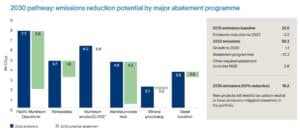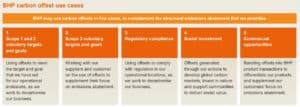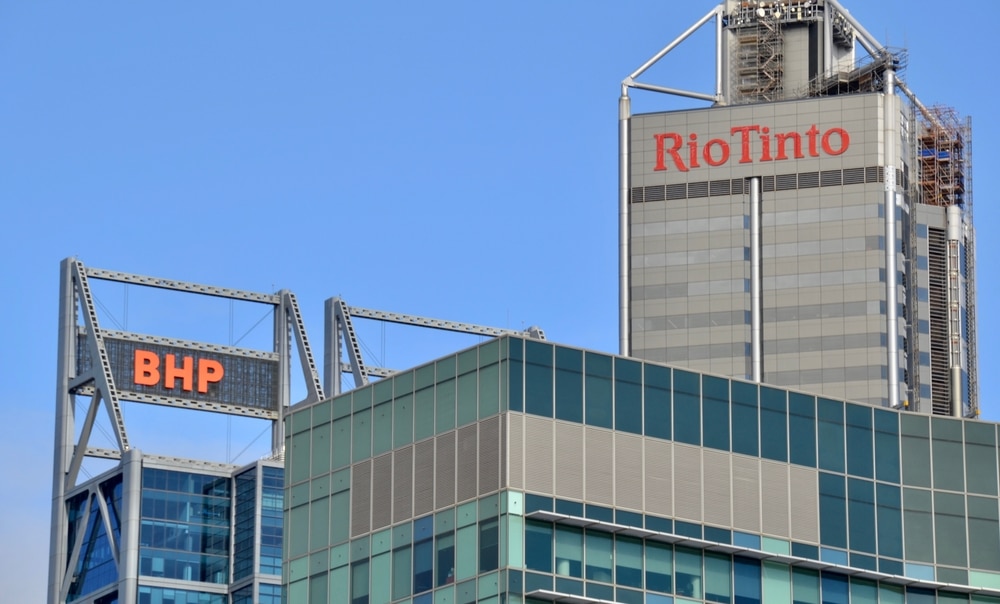Industry giants, BHP, Rio Tinto and Qantas, will invest A$80 million (USD$53 million) in Silva Capital’s Silva Carbon Origination Fund, the first close from these foundation investors. The fund is designed to offer access to large-scale, high-integrity carbon credits from nature-based projects in Australia focused on reforestation and sustainable agriculture.
Silva Capital, a joint venture between Roc Partners and C6 Investment Management, focuses on developing high-integrity carbon abatement projects to produce Australian Carbon Credit Units (ACCUs). The Silva Carbon Origination Fund is their first venture. The fund targets mixed-use agricultural and environmental planting projects across Australia to produce ACCUs at a large scale.
Australian Carbon Credit Units (ACCUs) are issued by the Australian government’s $3 billion Emissions Reduction Fund (ERF) to support the country’s goal of reducing carbon emissions by 43% from 2005 levels by 2030.
The ERF primarily grants credits to projects focused on deforestation prevention, native forest regeneration, and methane collection from landfills. These credits can be sold to the government or companies aiming to meet their emissions reduction targets. High-emission industries, such as mining and aviation, are increasingly purchasing carbon credits to offset their environmental impact.
Rio Tinto is Leveraging Carbon Credits For Its Decarbonization Goals
Jonathon McCarthy, Rio Tinto’s Chief Decarbonisation Officer, emphasized the company’s commitment to decarbonizing its operations. He noted that the investment in the Silva Carbon Origination Fund will help meet compliance obligations through high-integrity carbon credits.
Rio Tinto aims to retire 3.5 million carbon credits annually by 2030, covering 10% of its baseline emissions. This increased focus on the Voluntary Carbon Market (VCM) supports its 2030 climate goals, especially after acknowledging it may miss 2025 decarbonization targets.

In 2023, its Scope 1 and 2 emissions were stable at 32.6 million tonnes of CO2 equivalent (tCO2e), with Scope 3 emissions at 578 million tCO2e. Rio Tinto plans to increase carbon credit procurement to 1.7 million tCO2e by year’s end and commit 500,000 hectares to NBS by 2025.
For 2024, Rio Tinto has allocated an estimated $750 million for decarbonization efforts, including capital and operational expenditures, offsets, and Renewable Energy Credits (RECs). However, the company has revised its total expenditure estimate for meeting its 2030 climate targets, reducing it from $7.5 billion to $5-6 billion.
The company expects to increase its carbon credit procurement, mainly through Australian Carbon Credit Units (ACCUs).
What Role Do Carbon Credits Play in BHP’s Emission Reduction?
Graham Winkelman, BHP’s Vice President of Climate, remarked that while BHP is actively pursuing structural greenhouse gas emission reductions from its operations, carbon credits will play a role in achieving its decarbonization targets.
The world’s largest mining company, expects its carbon emissions to grow in the short term and acknowledges the need for rapid technological solutions and carbon credits to meet its 2050 net zero goal.
While on track for its 2030 emissions reduction target, BHP admits achieving net zero by 2050 will be challenging. The company aims for a 30% reduction in Scope 1 and 2 emissions by 2030 but does not include Scope 3 emissions, which involve its customers’ emissions, like those from steelmakers.
To achieve its 2030 decarbonization goals, BHP plans to invest $4 billion, with the majority directed toward reducing diesel use in haul trucks, electricity, and gas emissions. Diesel accounts for about 50% of the company’s pollution, while methane contributes over 14% of its operational greenhouse gas emissions.

The ACCUs will also help the mining giant in meeting compliance obligations under the Safeguard Mechanism Act.
Why Qantas is Investing in the Silva Carbon Origination Fund
Qantas’ investment in the Silva Carbon Origination Fund will aid in meeting its climate targets by securing high-quality, nature-based carbon credits.
The airline is financing its investment through its Climate Fund, a A$400 million initiative established last year to support the company’s decarbonization efforts. The fund will also boost the Australian carbon credit market, offering social and economic benefits to local communities.
Andrew Parker, Qantas’ Chief Sustainability Officer, emphasized that high-integrity carbon offsets will be crucial for hard-to-abate sectors like aviation. He further said that:
“We expect the demand for carbon offsets to continue to grow into the future and it’s going to take partnerships across industries to enhance the overall availability of high-quality, high-integrity carbon credits.”
This move builds on Qantas’ broader climate efforts, including its recent investments in the Sustainable Aviation Fuel Financing Alliance (SAFFA) and a Queensland biofuel production facility in partnership with Jet Zero Australia and LanzaJet.
The Focus of The Carbon Fund
The fund’s strategy includes investing in agricultural land to develop large-scale carbon sequestration projects by reforesting cleared areas while maintaining the land’s productivity for farming. These projects integrate robust carbon credit methodologies, enhance farming activities for local communities, and promote habitat restoration and biodiversity protection.
Silva Capital Co-Managing Director, Brad Mytton, highlighted that sustainable agriculture is central to the fund’s investment strategy. He noted that the Silva Carbon Origination Fund aims to create a portfolio of mixed farming land with significant canopy cover, producing a large volume of high-integrity carbon credits. Mytton further stated that:
“The Fund has been designed to appeal to both corporate investors seeking to access carbon credits and institutional investors seeking portfolio diversification…”
Backed by industry heavyweights, the Silva Carbon Origination Fund could play a pivotal role in advancing Australia’s carbon credit market and supporting the nation’s ambitious climate goals.

